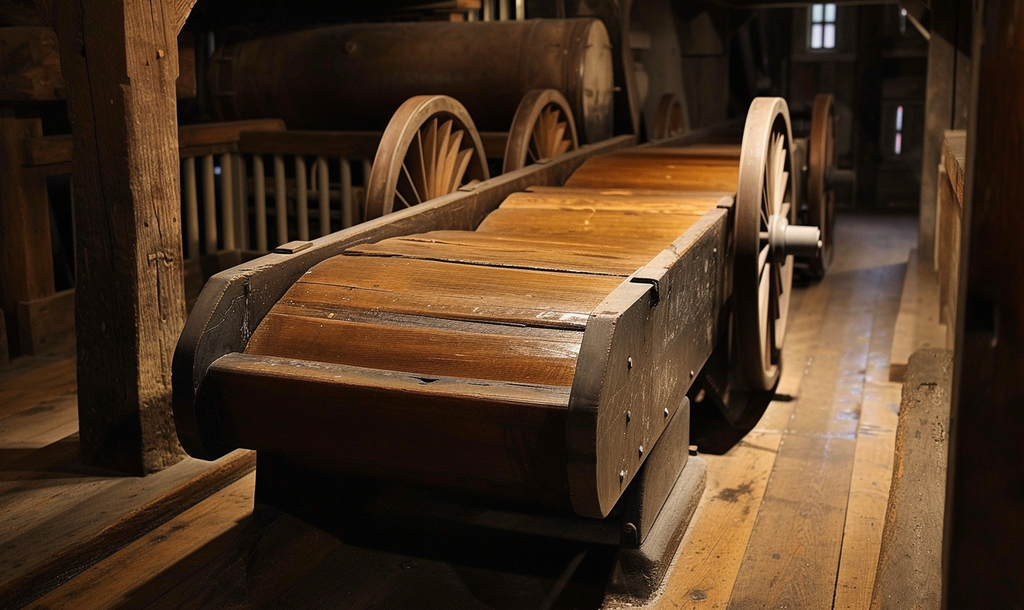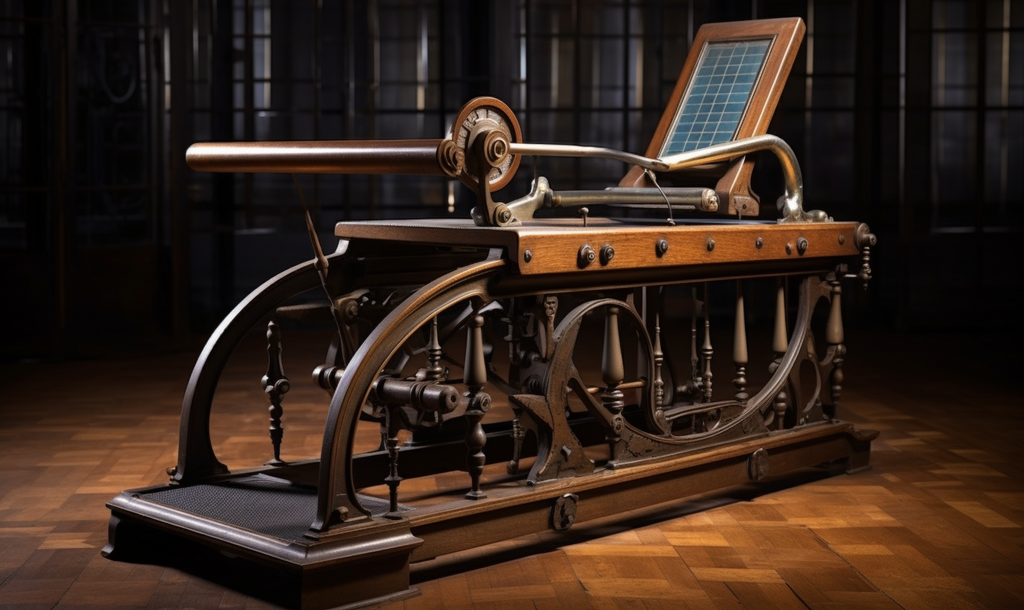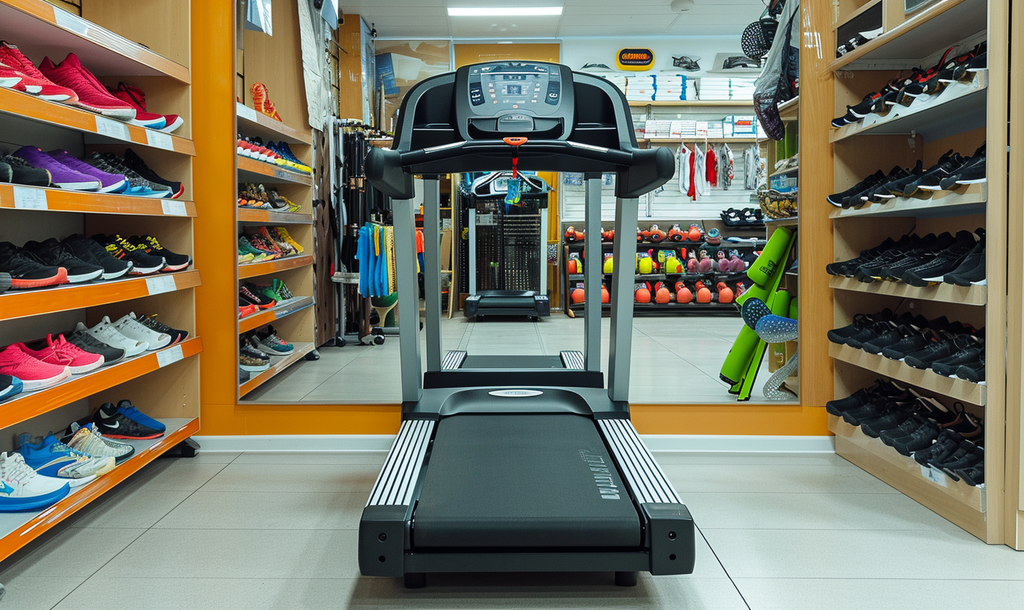Introduction
The treadmill, a universally present fitness apparatus in gyms and households worldwide, boasts a captivating history that extends over centuries. This article endeavors to unravel the compelling narrative surrounding the invention of the treadmill, shedding light on its origins, evolutionary path, and the noteworthy innovators who played a pivotal role in shaping its development. From its humble beginnings to its modern prominence, the treadmill's journey reflects not only advancements in fitness technology but also the enduring human quest for health and exercise. Join us as we explore the intricate tapestry of the treadmill's evolution, uncovering the stories of those who contributed significantly to its transformation into a ubiquitous and indispensable exercise tool.
1. The Origins of Treadmill Technology
The concept of a treadmill can be traced back to the ingenuity of ancient civilizations, where both human and animal power were harnessed for diverse tasks. In those times, treadmills were not conceived as fitness devices, but rather as ingenious mechanisms to generate energy for practical applications. Whether grinding grain in mills or pumping water for irrigation, these early treadmills exemplified a utilitarian approach. The focus was on leveraging the physical effort of individuals or animals to perform essential tasks, reflecting the resourcefulness of ancient societies in optimizing energy sources for daily needs. It's fascinating to observe how the treadmill's original purpose, rooted in functionality, has undergone a remarkable transformation over the centuries, evolving from a tool of labor to a ubiquitous fitness apparatus in the modern world.

2. Development of Treadmills in the 19th Century
The 19th century marked a significant transition in the utilization of treadmills, shifting from labor-intensive tasks to becoming exercise machines. During this transformative period, innovators recognized the potential of treadmills beyond their original utilitarian purposes. Instead of merely serving as devices for harnessing energy in mills or prisons, the focus expanded to incorporate health and fitness benefits. Entrepreneurs and fitness enthusiasts alike recognized the importance of physical activity for overall well-being. This era witnessed the advent of key inventions that played a pivotal role in this shift, laying the foundation for the treadmill's modern role in promoting exercise. These innovations not only transformed the perception of treadmills but also contributed to the establishment of exercise as a vital component of a healthy lifestyle. The 19th-century visionaries set the stage for the treadmill's evolution, anticipating its future significance in shaping fitness habits and fostering a culture of proactive health engagement.

3. Dr. Robert Bruce and the Medical Treadmill
Dr. Robert Bruce, a Scottish physician, played a pivotal role in the evolution of the treadmill. His invention, the medical treadmill, was designed for diagnostic purposes and laid the foundation for the modern treadmill we use today. This innovation was accompanied by significant advancements in the field of medicine. The medical treadmill not only provided a new means for diagnosing cardiovascular diseases but also propelled the development of sports medicine. This technological innovation enabled doctors to assess patients' cardiovascular health in a controlled environment, laying the groundwork for personalized medical interventions. Therefore, Dr. Robert Bruce's contribution not only influenced the evolution of the treadmill but also spurred in-depth research in the medical field regarding the relationship between exercise and health.
4. Military Applications During World War II
During World War II, treadmills unexpectedly proved invaluable, employed for the testing and rehabilitation of injured soldiers. This unforeseen application led to significant military innovations, enhancing the treadmill's reputation as a versatile fitness tool. Military personnel utilized treadmills for assessing soldiers' physical fitness and designing tailored rehabilitation programs. The adaptability of treadmills showcased during wartime contributed to their subsequent integration into civilian fitness regimes. Post-war, the recognition of treadmills as effective tools for rehabilitation and physical conditioning propelled their widespread use, solidifying their status as an essential and versatile component of fitness equipment.
5. Evolution of the Treadmill in the Fitness Industry
In the latter half of the 20th century, the treadmill underwent a remarkable evolution within the fitness industry, transitioning from a utilitarian device to a commercialized fitness staple. Technological and design advancements played a pivotal role in this transformation, making treadmills accessible to fitness enthusiasts in gyms and homes alike. The incorporation of features like adjustable incline, heart rate monitoring, and interactive digital interfaces revolutionized the user experience, catering to the rising demand for effective cardiovascular exercise. This evolution not only revolutionized the fitness landscape but also reflected a societal shift towards prioritizing health and wellness, making treadmills an integral component of modern fitness routines.

6. Key Innovators in Modern Treadmill Design
Recognizing the pivotal role of key innovators in modern treadmill design is crucial for understanding the evolution of fitness equipment. Dr. Kenneth Cooper, renowned as the "Father of Aerobics," emphasized cardiovascular exercise, influencing treadmills' development. Arthur Jones introduced variable resistance concepts, shaping targeted muscle training. Dr. Paul Juris contributed biomechanical insights, ensuring ergonomic treadmill design. Dr. Ray Browning advanced treadmill technology through physiological principles. Steve Hedrick, as a fitness equipment company CEO, integrated interactive displays and virtual workouts. Dr. Hirofumi Tanaka's cardiovascular aging research influenced heart rate monitoring in modern treadmills. Dave Smith's biomechanical expertise improved gait analysis and ergonomic considerations. These innovators collectively transformed treadmills into sophisticated, user-friendly fitness tools, reflecting the fusion of scientific principles and technological advancements in the pursuit of optimal health and fitness.
7. Treadmill's Impact on Health and Fitness
Research and statistics underscore the myriad benefits of treadmill exercise, spanning from improved cardiovascular health to effective weight management. Studies consistently show that regular treadmill use enhances heart health, lowers blood pressure, and contributes to overall fitness. Treadmills facilitate convenient and controlled workouts, promoting consistency in exercise routines. Their accessibility, irrespective of weather conditions, encourages year-round physical activity. Moreover, treadmill workouts prove instrumental in weight loss efforts, burning calories efficiently. As a versatile tool, treadmills have become a cornerstone in promoting widespread health awareness and fostering a culture of regular exercise, ultimately influencing positive health outcomes on a global scale.

Conclusion
The transformation of the treadmill from a utilitarian device to a prominent fitness tool stands as a testament to human ingenuity and our evolving comprehension of health and exercise. By delving into its history and acknowledging the pioneers who molded it, we not only appreciate the treadmill's journey but also recognize its substantial impact on both historical and contemporary fitness landscapes. From its humble origins to its current status as a ubiquitous exercise companion, the treadmill reflects the enduring human pursuit of well-being. Its evolution mirrors societal shifts towards prioritizing health, making it a symbol of adaptability and a key player in fostering a global culture of fitness and wellness.
FAQs
Q1. Who invented the treadmill?
A: The treadmill, in its early form, was invented by Sir William Cubitt in the early 19th century. However, its concept can be traced back to ancient civilizations where human or animal-powered devices were used.
Q2. What was the original purpose of the treadmill?
A: Originally, treadmills were designed for practical applications such as grinding grain in mills or pumping water. The focus was on harnessing human or animal energy for labor-intensive tasks.
Q3. When did treadmills transition to exercise machines?
A: The transition occurred in the 19th century when innovators sought ways to promote physical activity for health and fitness. Treadmills evolved from labor-intensive tools to exercise machines.
Q4. How did Dr. Robert Bruce contribute to treadmill evolution?
A: Dr. Robert Bruce, a Scottish physician, played a pivotal role by inventing the medical treadmill for diagnostic purposes. This laid the foundation for the modern treadmill we use today.
Q5. How did treadmills find utility during World War II?
A: During World War II, treadmills were repurposed for testing and rehabilitating injured soldiers. This unexpected application showcased the treadmill's versatility.
Q6. Who are key innovators in modern treadmill design?
A: Key innovators include Dr. Kenneth Cooper, Arthur Jones, Dr. Paul Juris, Dr. Ray Browning, Steve Hedrick, Dr. Hirofumi Tanaka, and Dave Smith. They contributed to the transformation of treadmill design.
Q7. What is the impact of treadmills on health and fitness?
A: Treadmills have a profound impact, enhancing cardiovascular health, aiding weight management, and promoting overall fitness. They facilitate convenient and controlled workouts, contributing to positive health outcomes.
Q8. How have treadmills evolved in the fitness industry?
A: In the latter half of the 20th century, treadmills underwent commercialization for fitness enthusiasts. Technological advancements and design evolution made them ubiquitous in gyms and homes, meeting the growing demand for cardiovascular exercise.
-------------------------------------------------------------
Your encouragement and support are the driving force of our creation. If you want to support us, you can pay a small amount of Bitcoin or Ethereum to the following address:
Bitcoin:
bc1q56xsdwhnva969w38808yu3erxjrxqludn9ehg9

Ethereum:
0x555C43d02140634250e965F963733Fb32F974D67














